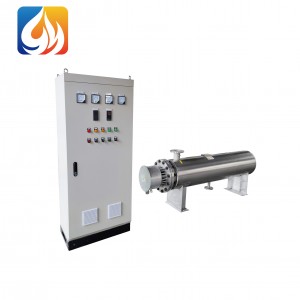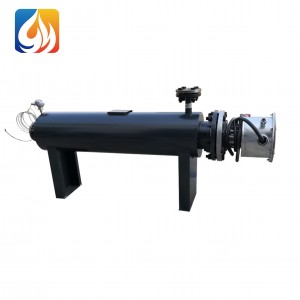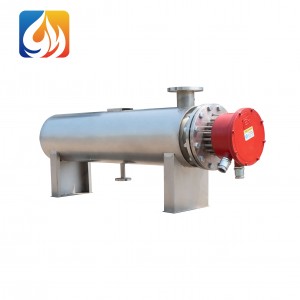Pipeline Heater for Hot Water Circulation
Working principle
Pipeline electric heater is a device that consumes electrical energy to convert it into thermal energy for heating materials that need to be. During operation, the low-temperature fluid medium enters its inlet under pressure, flows through the specific heat exchange channels inside the electric heating vessel, and follows path designed based on fluid thermodynamics principles. It carries away the high-temperature heat energy generated by the electric heating elements, raising the temperature of the heated medium The outlet of the electric heater outputs the high-temperature medium required by the process. The internal control system of the electric heater automatically regulates the output power based on temperature sensor signal at the outlet, maintaining a uniform temperature of the medium at the outlet. When the heating element overheats, the independent overheat protection device of heating element immediately cuts off the heating power to prevent the heated material from overheating, which can cause coking, degradation, and carbonization, and in severe, damage the heating element. This effectively extends the service life of the electric heater.
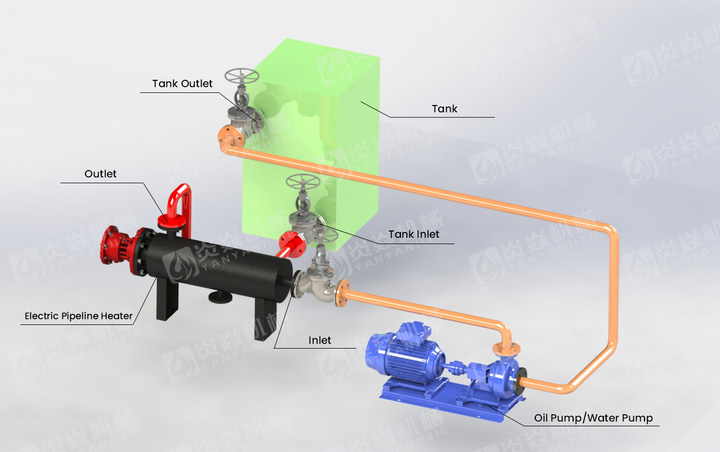
Product details display
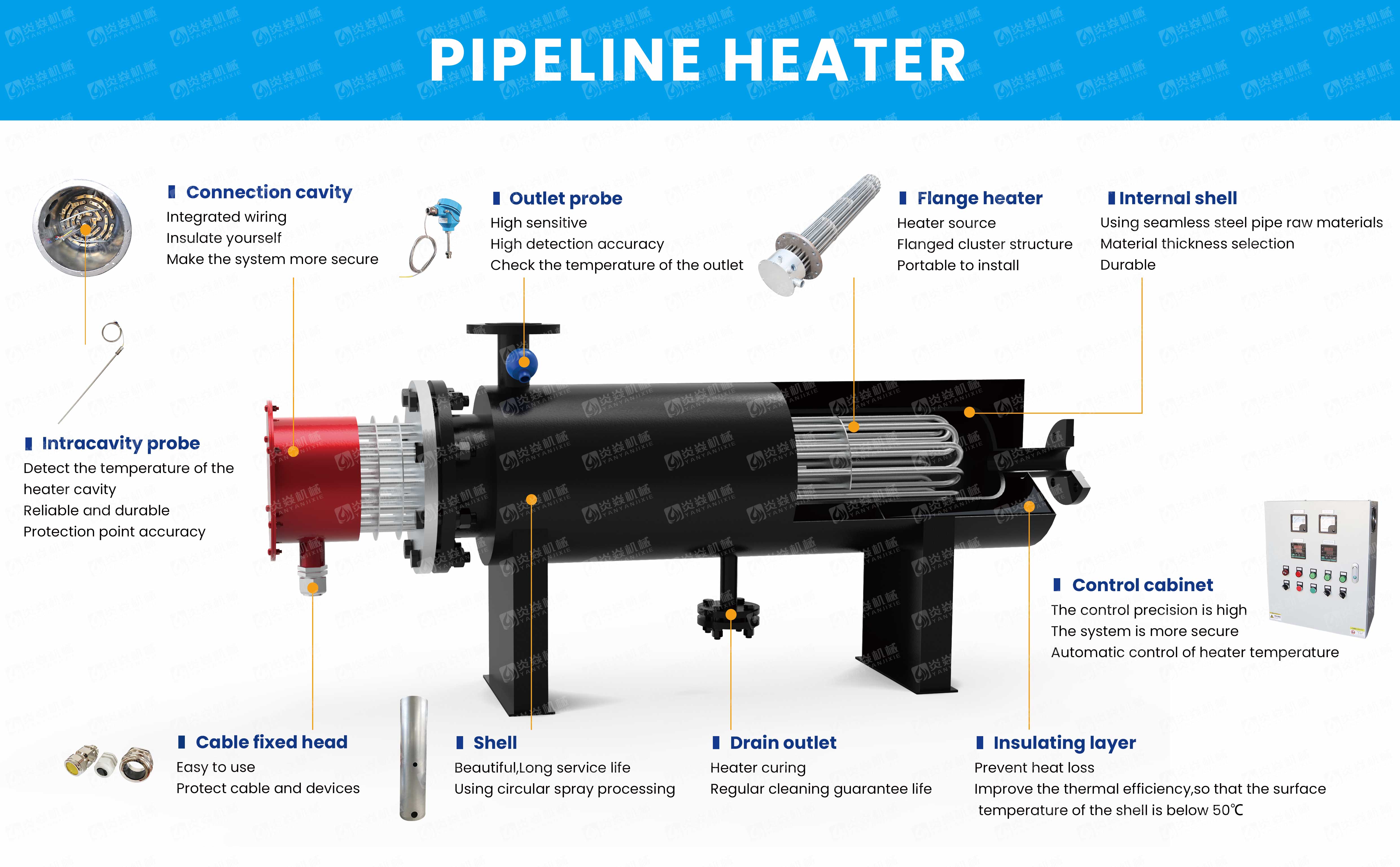

Working condition application overview
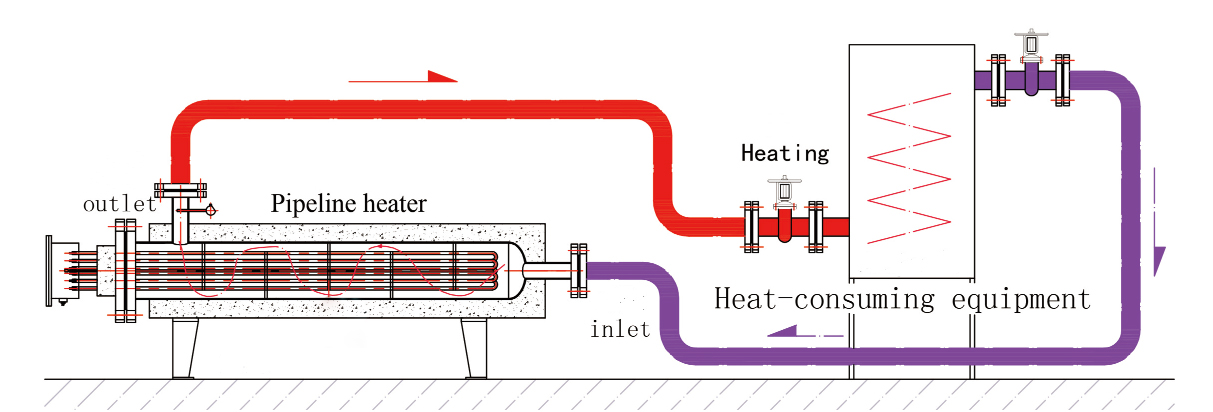
1) Overview of sewage heating pipeline electric heater
The electric heater is a kind of equipment which is mainly used for sewage heating in sewage treatment project. The electric heater converts electrical energy into heat energy to realize the heating effect of the sewage heating pipe and improve the efficiency and quality of the sewage treatment process.
2) Working principle of electric heater of sewage heating pipeline
The working principle of the electric heater in the sewage heating pipeline can be divided into two parts: electric energy conversion and heat transfer.
1. Electric energy conversion
After the resistance wire in the electric heater is connected to the power supply, the current through the resistance wire will produce energy loss, which is converted into heat energy, heating the heater itself. The temperature of the heater surface increases with the increase of the current, and eventually the heat energy of the heater surface is transmitted to the sewage pipe that needs to be heated.
2. Heat conduction
The electric heater transfers heat energy from the surface of the heater to the surface of the pipe, and then gradually transfers it along the wall of the pipe to the sewage in the pipe. The process of heat conduction can be described by the heat conduction equation, and its main influencing factors include pipe material, pipe wall thickness, thermal conductivity of heat transfer medium, etc.
3) Summary
The electric heater converts electrical energy into heat energy to realize the heating effect of the sewage heating pipeline. Its working principle includes two parts: electric energy conversion and thermal heat transfer, of which thermal heat transfer has many influencing factors. In practical applications, the appropriate electric heater should be selected according to the actual situation of the heating pipeline, and reasonable maintenance should be carried out.
Product application
Pipeline heater widely used in aerospace, weapons industry, chemical industry and colleges and universities and many other scientific research and production laboratory. It is especially suitable for automatic temperature control and large flow high temperature combined system and accessory test, the heating medium of the product is non-conductive, non-burning, non-explosion, no chemical corrosion, no pollution, safe and reliable, and the heating space is fast (controllable).
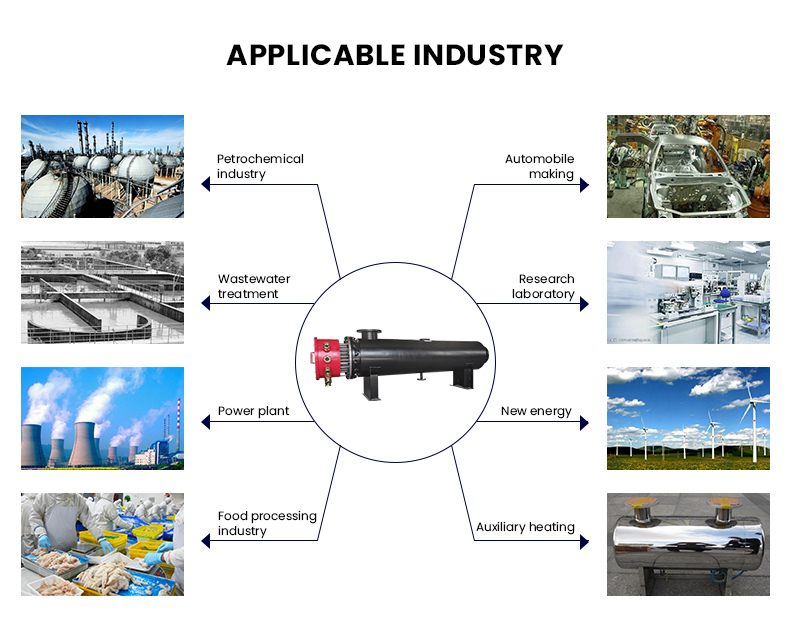
Classification of heating medium
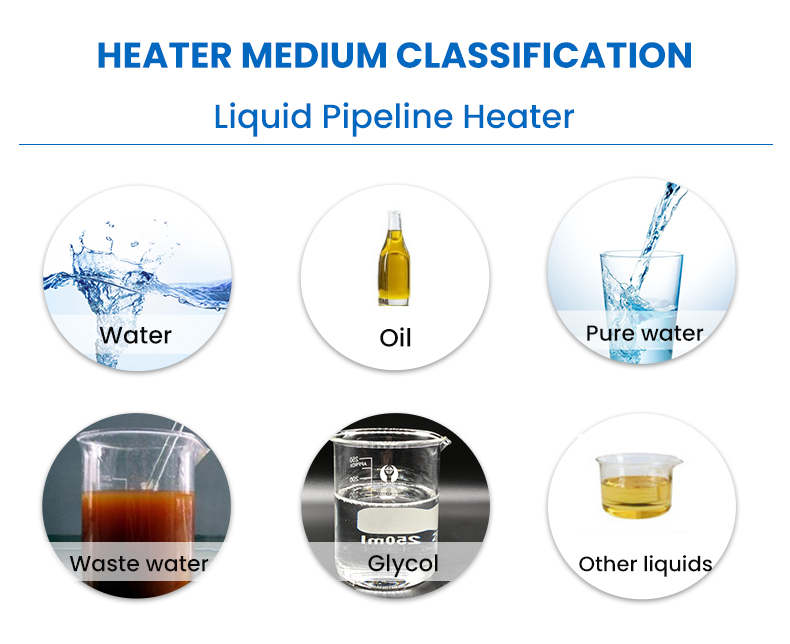
Customer use case
Fine workmanship, quality assurance
We are honest, professional and persistent, to bring you excellent products and quality service.
Please feel free to choose us, let us witness the power of quality together.
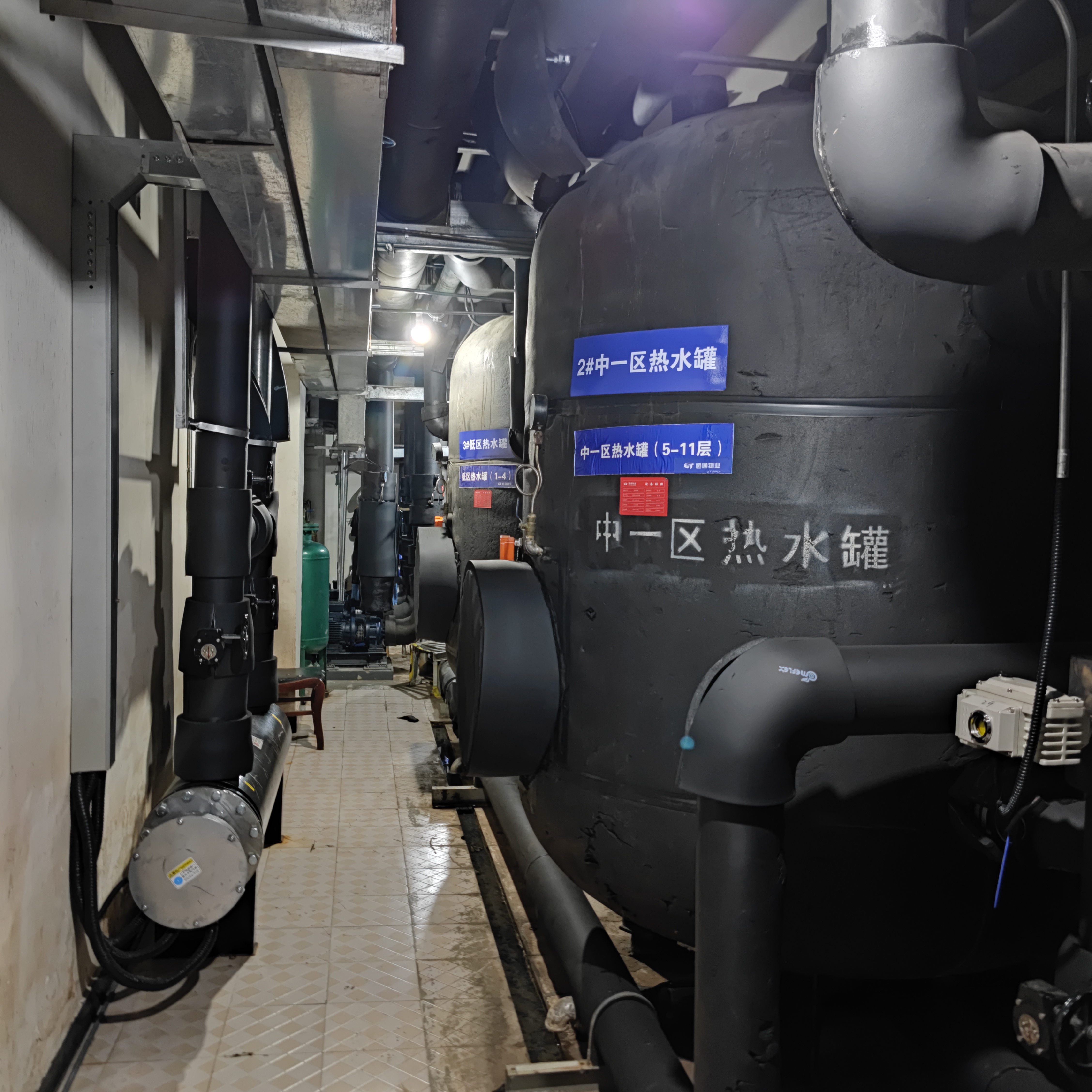
Certificate and qualification


Product packaging and transportation
Equipment packaging
1) Packing in imported wooden cases
2) The tray can be customized according to customer needs
Transport of goods
1) Express (sample order) or sea (bulk order)
2) Global shipping services










